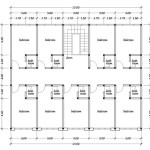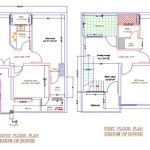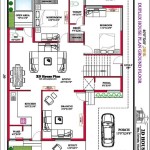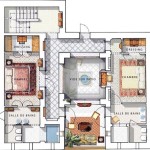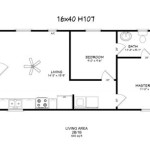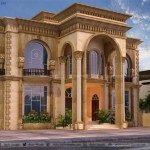Ranch Style House Plans With Inlaw Suite: Multi-Generational Living Solutions
The demand for housing that accommodates extended families is demonstrably increasing. This trend reflects a variety of socio-economic factors, including rising housing costs, aging populations, and a cultural shift towards closer intergenerational living. Ranch style house plans with in-law suites provide a practical and appealing solution for families seeking to live together while maintaining a degree of privacy and independence. These plans offer a versatile layout that can adapt to the changing needs of families over time.
Ranch style architecture, characterized by its single-story design and horizontal orientation, lends itself well to the incorporation of an in-law suite. The inherent accessibility of a single-level home is especially beneficial for elderly relatives or individuals with mobility challenges. Moreover, the expansive footprint of a ranch house allows for a seamless integration of a separate living space without compromising the functionality of the main residence. This integration is crucial for creating a harmonious living environment for all occupants.
Key Benefits of Ranch House Plans with In-Law Suites
Several factors contribute to the growing popularity of ranch-style homes with in-law suites. These benefits extend beyond mere accommodation and encompass financial advantages, enhanced caregiving opportunities, and improved quality of life for extended family members.
Financial Advantages: Combining households can significantly reduce living expenses for both the primary family and the in-law suite occupants. Shared mortgage payments, utility bills, and property taxes can alleviate financial burdens and free up resources for other needs. Moreover, an in-law suite can potentially generate rental income if the space is not immediately required for family members. This rental income can be used to offset mortgage payments or to fund other investments. The long-term financial benefits of shared living arrangements are considerable and contribute to overall financial stability for all parties involved.
Enhanced Caregiving Opportunities: Living in close proximity to elderly parents or other relatives allows for more convenient and effective caregiving. Family members can readily provide assistance with daily tasks, medical appointments, and other needs. This close proximity can also provide peace of mind, knowing that loved ones are safe and well cared for. The ability to provide care within a family setting can also delay or eliminate the need for expensive nursing home care, saving significant costs and allowing individuals to remain in a familiar and comfortable environment. Furthermore, the presence of grandparents or other relatives can provide valuable support for childcare, allowing parents to pursue their careers or other interests.
Improved Quality of Life: In-law suites provide a sense of independence and privacy for elderly parents or other relatives. They can maintain their own living space, cook their own meals, and pursue their own interests without feeling like they are intruding on the primary family's space. This independence is crucial for maintaining self-esteem and a sense of purpose. The presence of extended family can also enrich the lives of children, providing them with opportunities to learn from their elders and to develop a stronger sense of family connection. The shared living arrangement can foster a sense of community and mutual support, leading to improved overall well-being for all members of the household.
Design Considerations for Ranch House Plans with In-Law Suites
Designing a ranch-style house with an in-law suite requires careful planning and attention to detail. The goal is to create a living space that is both functional and aesthetically pleasing, while also ensuring privacy and independence for all occupants. Several key design considerations must be taken into account to achieve this goal.
Separate Entrance and Privacy: A separate entrance for the in-law suite is essential for maintaining privacy and independence. This entrance should be located away from the main entrance of the house to avoid confusion and to ensure that the in-law suite occupants can come and go without disturbing the rest of the household. Consider incorporating a small porch or patio area near the separate entrance to create a more welcoming and private space. Soundproofing between the main house and the in-law suite is also crucial for minimizing noise transfer and ensuring a peaceful living environment for all occupants. Design considerations should address wall insulation, door seals, and even the placement of plumbing fixtures to minimize noise transmission.
Functional Layout and Accessibility: The layout of the in-law suite should be designed to meet the specific needs of its occupants. This may include incorporating features such as wider doorways, grab bars in the bathroom, and a roll-in shower for individuals with mobility challenges. The kitchen should be equipped with appliances that are easy to use and accessible, and the living area should be comfortable and well-lit. Consider incorporating universal design principles throughout the in-law suite to ensure that it is accessible to individuals of all ages and abilities. The layout should also consider storage needs, providing ample closet space and storage cabinets for personal belongings.
Integration with the Main House: While maintaining privacy is important, it is also desirable to integrate the in-law suite with the main house in some way. This can be achieved through a shared common area, such as a laundry room or a backyard patio. This shared space can provide opportunities for family members to interact and to maintain a sense of connection. The design should also consider the overall aesthetic of the house, ensuring that the in-law suite blends seamlessly with the rest of the home. The use of similar materials, colors, and architectural details can help to create a cohesive and harmonious design. Furthermore, consider the location of utilities and services to ensure that the in-law suite has access to essential amenities such as heating, cooling, and internet access.
Legal and Regulatory Considerations
Before embarking on the construction of a ranch-style house with an in-law suite, it is important to understand the legal and regulatory requirements in your area. Zoning laws, building codes, and homeowner association rules can all impact the feasibility and design of your project. Failure to comply with these regulations can result in costly delays or even legal action.
Zoning Laws and Building Codes: Zoning laws dictate the types of structures that are permitted in a particular area. Some zoning laws may restrict the construction of accessory dwelling units (ADUs), which is the technical term for in-law suites. Building codes specify the minimum standards for construction, including safety regulations, electrical codes, and plumbing codes. It is important to consult with your local planning department to understand the specific zoning laws and building codes that apply to your project. You may need to obtain permits before you can begin construction. Building codes are in place to protect the health and safety of occupants and to ensure that structures are built to withstand the elements.
Homeowner Association Rules: If your property is located within a homeowner association (HOA), you will need to review the HOA rules and regulations to determine if there are any restrictions on the construction of in-law suites. Some HOAs may prohibit ADUs altogether, while others may have specific requirements regarding the size, location, and design of the in-law suite. It is important to obtain approval from the HOA before you begin construction. Failing to do so can result in fines or legal action. HOAs are typically responsible for maintaining the common areas of a community and for enforcing rules and regulations that are designed to protect property values and to maintain a certain aesthetic standard.
Property Taxes and Insurance: Adding an in-law suite to your property may increase your property taxes and insurance premiums. The increase in property taxes will depend on the assessed value of the in-law suite. Your insurance premiums may also increase to cover the additional living space. It is important to factor these costs into your budget when planning your project. Consult with your local tax assessor and your insurance provider to obtain accurate estimates of these costs. It is also important to ensure that your insurance policy covers the in-law suite and its occupants in case of fire, theft, or other damage. Furthermore, depending on whether the in-law suite will be rented out, additional specific landlord insurance coverage may be required.
Planning a ranch house with an in-law suite can improve family living, but it requires due diligence in design, budgeting, and adherence to local legal and building regulations. A well-executed plan promises long-term benefits.

House Plan 65862 Tuscan Style With 2091 Sq Ft 3 Bed 2 Bath 1

Find The Perfect In Law Suite Our Best House Plans Dfd Blog

5 Bedroom Ranch House Plan With In Law Suite 2875 Sq Ft

Country House Plan With 4 Bedrooms And 3 5 Baths 4427

Modern Farmhouse Plan With In Law Suite 70607mk Architectural Designs House Plans

Southern Style House Plan With In Law Suite

Rising Trend For In Law Apartments Brick House Plans Bungalow Modular Home Floor

Cape Cod House Plans With Inlaw Suite Best Of Mother In L Shaped New One Story

House Plans With In Law Suites Houseplans Blog Com

One Story With In Law Suite Plan 2286


